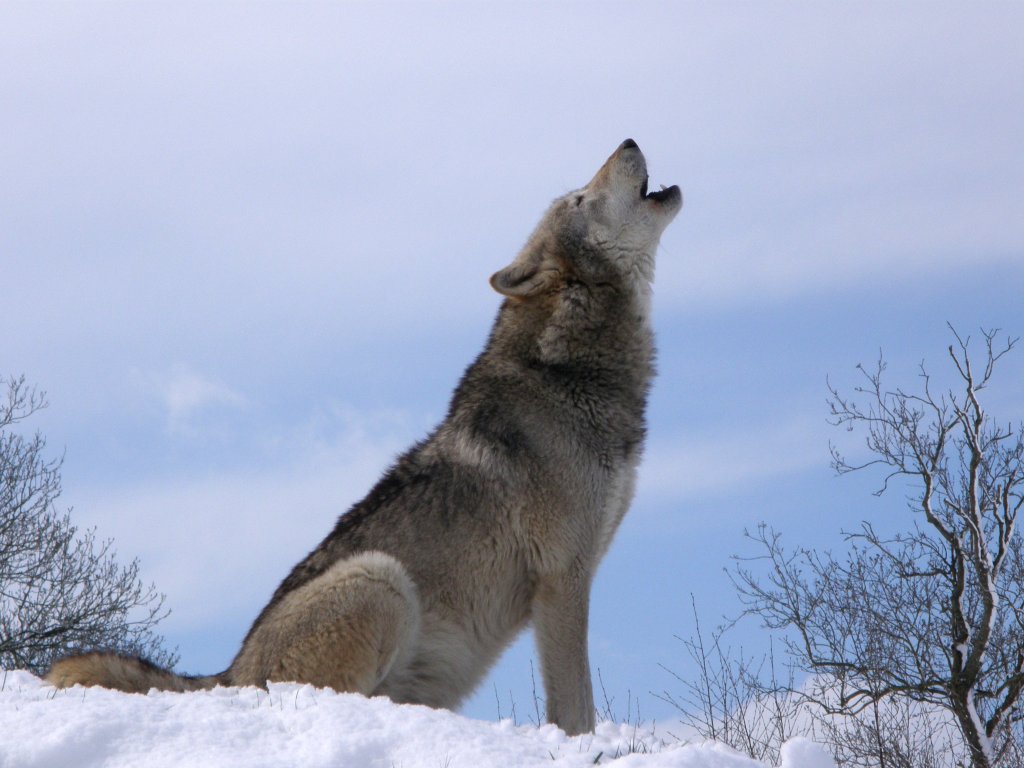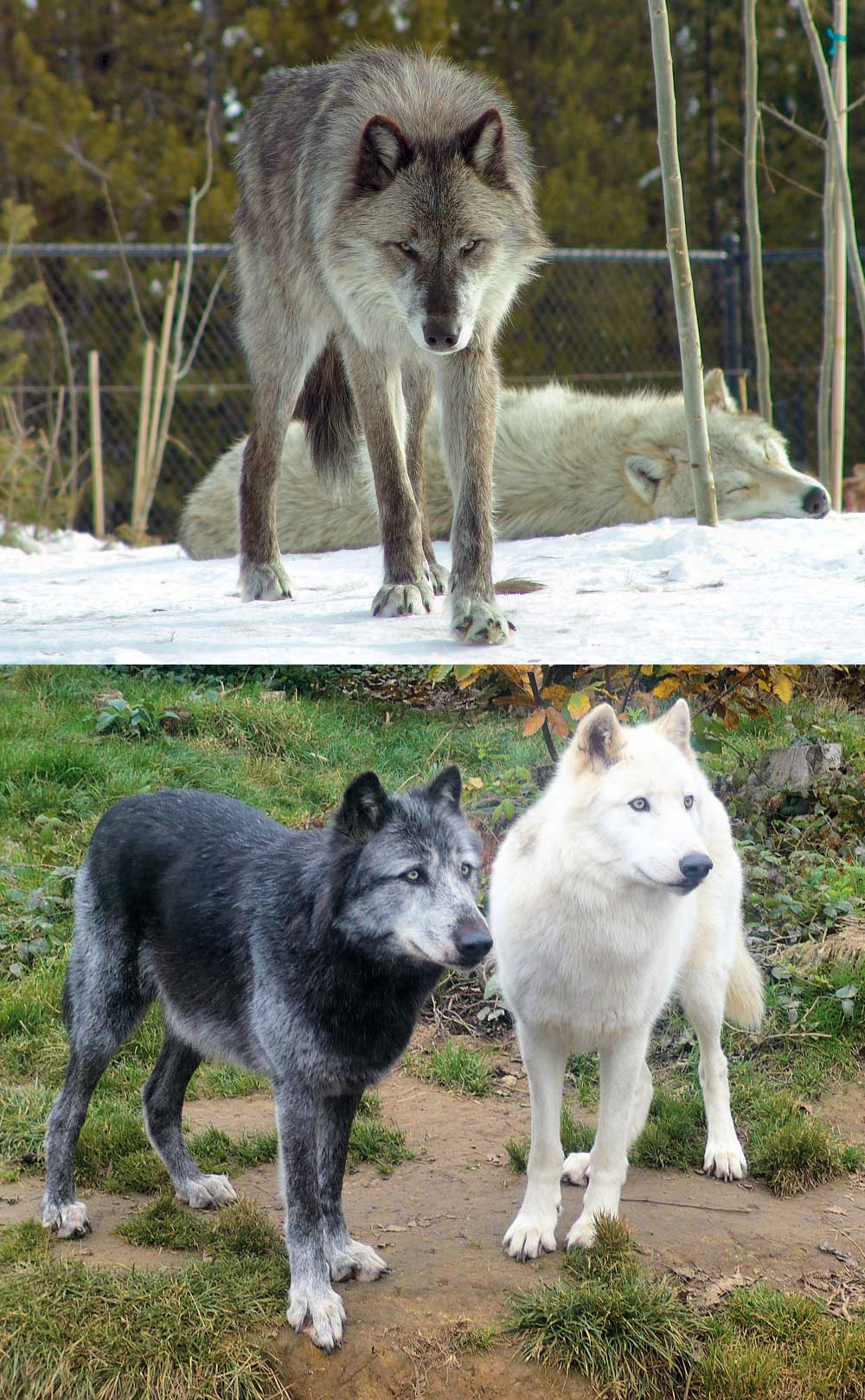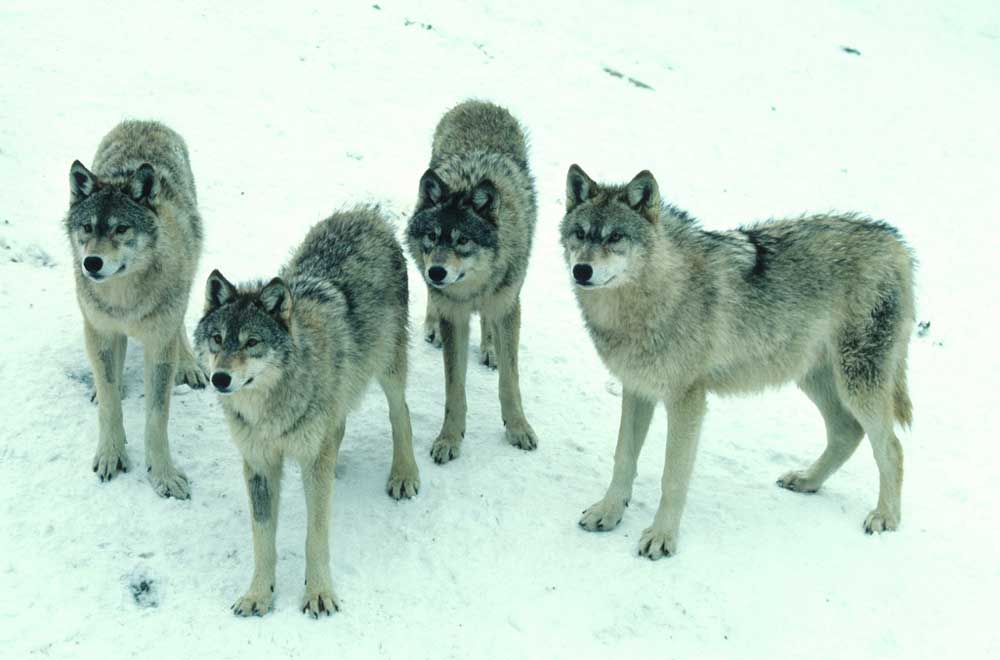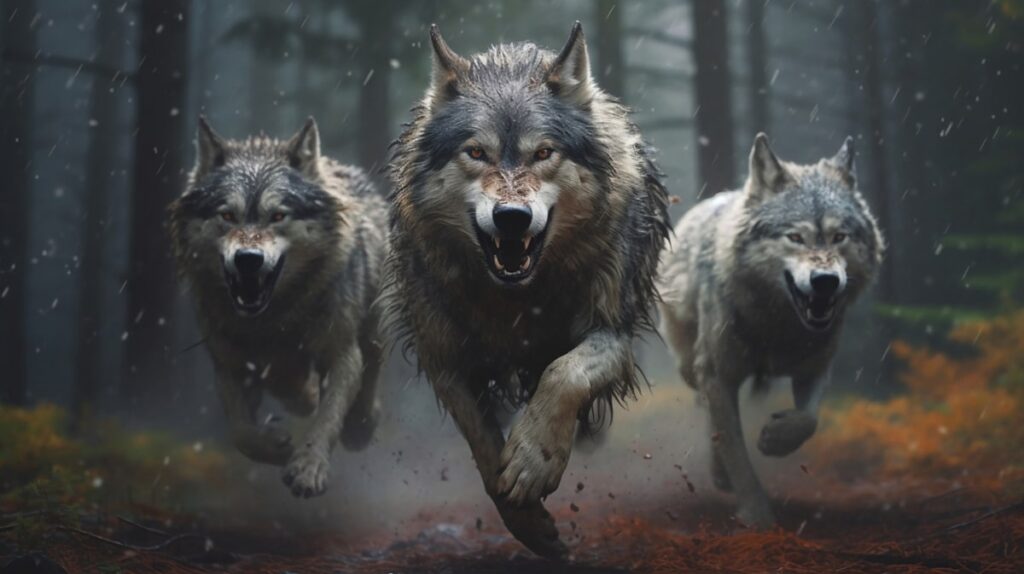- Swimmers: Wolves can swim up to 13 kilometers in one stretch
- Hearing: Under the right circumstances, wolves can hear the sounds of other animals up to 10 kilometers away in forests and up to 16 kilometers away in open terrain such as plains, tundra and the like.
- Speed: The gray wolf (Canis lupus) has a top speed of 70 km/h and can leap 5m at a time. It can continue a high-speed chase for up to 20 minutes
- Bad watchdogs: Wolves are not suitable as guard dogs because they have a timid nature and typically hide when confronted with something unfamiliar – so rather than barking at intruders, they will usually try to hide from them
- Sense of smell: Wolves have more than 200 million scent cells. In comparison, humans only have around 5 million. Wolves can smell other animals from over 1.6 kilometers away
- Big meals: A hungry wolf can eat up to 9 kg of meat in a single meal
- Jaws and teeth: Wolves’ jaws are very powerful; they can bite their jaws together with a pressure of 100 kg/cm2. In comparison, most dogs bite with about 50 kg/cm2 – only half that force! Wolves have 42 teeth
- Size: The average length of wolves is 1.3 – 1.8 m (female wolves) and 1.5 – 2 m (male wolves). Average weight is 27 – 36 kg (female wolves) and 31 – 49 kg (male wolves). Average height is 66 – 81 cm (shoulder height)
- Age: In the wild, wolves live to a maximum age of 13 years (usually 6-8 years). In captivity, they can live up to 16 years old
- Wolf howls: Wolves howl to: 1) make contact with their pack members, 2) gather the group before hunting, 3) chase away rival packs. Lone wolves howl to attract mates, but also simply because they are alone. The single wolf howl lasts about 5 seconds, but the howl can seem longer when the whole pack howls at once

Fact: Wolves howl for many different reasons; to rally the pack before hunting, “call” pack members, chase away rival wolves, etc.
Wolves and humans
- Hitler: Adolph Hitler was so fascinated by wolves that he sometimes used the aliases ‘Mr. Wolf’ or ‘Leader Wolf’ to refer to himself
- Ulveland: In the 1600s, Ireland was called ‘Wolf Country’ because there were so many wolves in the country. Wolf hunting was a popular sport among the nobility, who also used Irish wolfhounds to hunt and kill the wolves. In fact, the first records of an Irish Wolfhound date back to the Roman Empire in 391 AD.
- Werewolf: In 1927, a French policeman was convicted of shooting a boy he thought was a werewolf. That same year, the last wild wolves in France were killed
Facts about wolf pups
- Birth: Wolf mating season is February to March and their gestation lasts around 65 days. At birth, the pups are both blind and deaf. Birth weight is around ½ kg
- Urine: For a newborn wolf pup to urinate, its mother must massage its belly with her tongue
- Eye color: At birth, wolf pups’ eyes are blue. The eyes only turn yellow when they are around 8 months old

Fact: The gray wolf is the most common wolf in Europe, Asia and North America. It is not always gray, as you can see in the bottom image; it can be black, white, gray, reddish or brownish in its fur
Facts about Wolfpack
- Size: A wolf pack can consist of anywhere from 2 – 30 wolves (in rare cases more). The average wolf pack consists of 5 – 8 wolves
- Wolf pairs: A male and female wolf that mate usually stay together for life. They are dedicated parents with sophisticated family bonds
- Offspring: Although many of the female wolves in a wolf pack are capable of having pups, only a few usually mate and become pregnant. In many cases, only the alpha male and alpha female mate, which helps to ensure the strongest offspring. The rest of the females help out by taking care of the young
- Alfaulve: Male wolves that rank low in the pack hierarchy don’t mate and often suffer from an inhibitory stress condition, often referred to by professionals as “psychological castration”. Similarly, low-ranking female wolves are often so afraid of the alpha female that they don’t go into heat
More facts about wolves
- Vikings: Vikings wore wolf skins and drank wolf blood to carry the spirits of the wolves with them when they went to war
- Cave paintings: The earliest cave paintings of wolves have been found in Southern Europe and date back to 20,000 BC.
- Illness: The name of the autoimmune disease ‘lupus’ (Systemic lupus erythematosus) literally means “wolf redness”. The disease takes its name from 19th century doctors who believed the disease was caused by wolf bites
- Dog families: Wolves are the largest members of the canine family (Canidae), which includes dogs, coyotes, dingoes, foxes, jackals and more.
- Run: Wolves run on their toes, which helps them to stop abruptly and turn around quickly. In addition, it also prevents their pads from wearing down too quickly
- Distribution: The wolf was once the most widespread predator on land. The only places where wolves didn’t exist were in deserts and rainforests
- Giant wolf: Canis dirus – or ‘Dire wolf’ – is the name of a prehistoric giant wolf that lived in North America for around 2 million years and went extinct around 10,000 years ago. These wolves could weigh up to 80 kg (no more than modern wolves) and were capable of hunting and killing mammoths
- Biggest and smallest: The smallest wolves in the world live in the Middle East and can weigh as little as 30 kg (adult male wolves). The largest live in Canada, Alaska and Russia and can weigh up to 80 kg

Fact: A wolf pack typically consists of 5 to 8 wolves, but in some cases can have over 30 members


